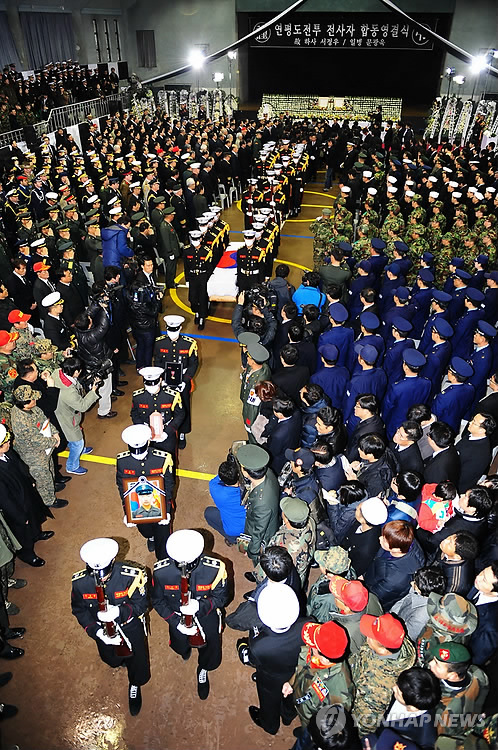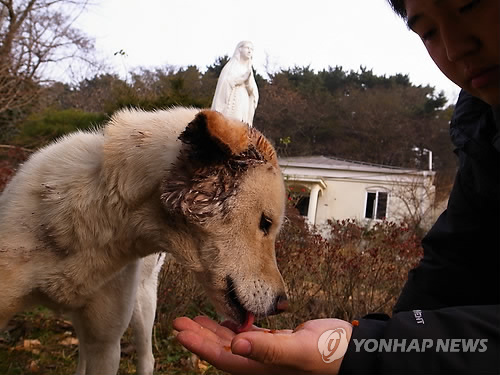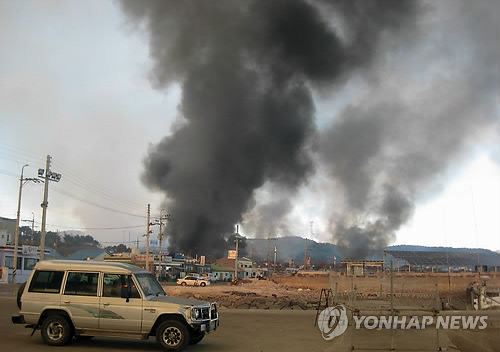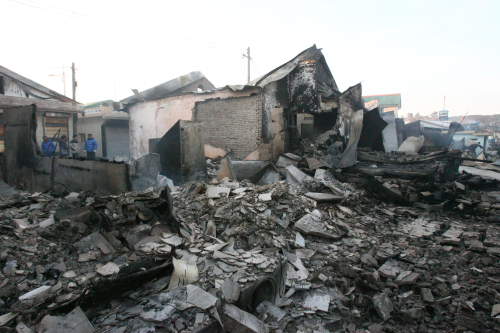Funeral Held for ROK Marines Killed in YP-do Attack

South Korea holds a nationally televised funeral for two marines killed in an artillery clash with North Korea earlier this week, at a military hospital in Seongnam, south of Seoul, on Nov. 27. The two marines and two civilians were killed in the Nov. 23 North Korean artillery attack on Yeonpyeong Island. (Yonhap)
The ROK held a funeral Saturday (27 November) for ROK Marines Sgt. Seo Jeong-woo and Pvt. Moon Kwan-wook who were killed during the DPRK’s artillery attack on YP-do on 23 November. Yonhap reports:
South Korea began a nationally televised funeral Saturday for two marines killed in an artillery clash with North Korea earlier this week as tension soared on the peninsula ahead of massive U.S.-South Korean naval drills aimed at intimidating Pyongyang.
The funeral, held at a military hospital in the city of Seongnam, just south of Seoul, drew hundreds of ranking government officials, general-grade officers, politicians, religious leaders, anti-North Korea activists and civilians angered by the clash on Tuesday.
North Korea denies initiating the exchange of artillery shells that also killed two South Korean civilians on the western island of Yeonpyeong. Seoul and Washington are set to begin a naval exercise mobilizing a nuclear-powered aircraft carrier in the Yellow Sea on Sunday in a show of force against Pyongyang.
At 2:34 pm KST on 23 November 2010, DPRK fired some 170 artillery shells at YP-do (located near the Northern Limit Line) over two hours in a flagrant and malicious violation of the armistice agreement that ended the Korean War. About 90 of the KPA’s shells fell into the water, and 80 fell on land. The DPRK’s attack killed two ROK Marines and two civilians and caused the evacuation of most of YP-do’s civilian population. 19 homes were destroyed and fires caused by the KPA’s shells destroyed 70% of a forest.

A dog wounded by a North Korean shell that hit the South Korean island of Yeonpyeong earlier this week eats part of a combat ration from a South Korean man on Nov. 27. Most of the residents on the island have evacuated since the artillery attack on Nov. 23. (Yonhap)
On Sunday (28 November) morning explosions originating in North Korea caused YP-do’s remaining population to seek shelter in bunkers, and the ROK’s defense ministry ordered journalists to depart the island.
“At this stage, it is unpredictable what kind of a provocative action North Korea will take using the South Korean-U.S. joint drills as a justification,” the ministry said in a statement. “So we ask journalists on Yeonpyeong Island to leave within today.”
The South’s military “cannot guarantee” the safety of journalists in case of North Korea’s provocation, it said.
A ministry official said all journalists were advised to leave Yeonpyeong. He said a Coast Guard ship would be waiting at around 7:00 p.m. to transport them.
“It’s not an evacuation, but even if some of the journalists stay on the island, they will be banned from reporting,” the official said on the condition of anonymity.

Residents of South Korea's western Yeonpyeong Island bordering North Korea arrive at Incheon port on Nov. 24 after evacuating from the island, which was hit hard by an indiscriminate North Korean attack the day before. The communist country fired hundreds of rounds of artillery at the island and its surrounding areas on Nov. 23, killing two South Korean marines and injuring a score of other soldiers and civilians.

This photo, taken by a firefighter on South Korea's Yeonpyeong Island, shows some areas engulfed in smoke as North Korea fired about 170 rounds of artillery on the island on Nov. 23. The attack killed at least four South Koreans, including two civilians, and injured more than a dozen others. (Photo courtesy of Incheon Fire Dept.)
